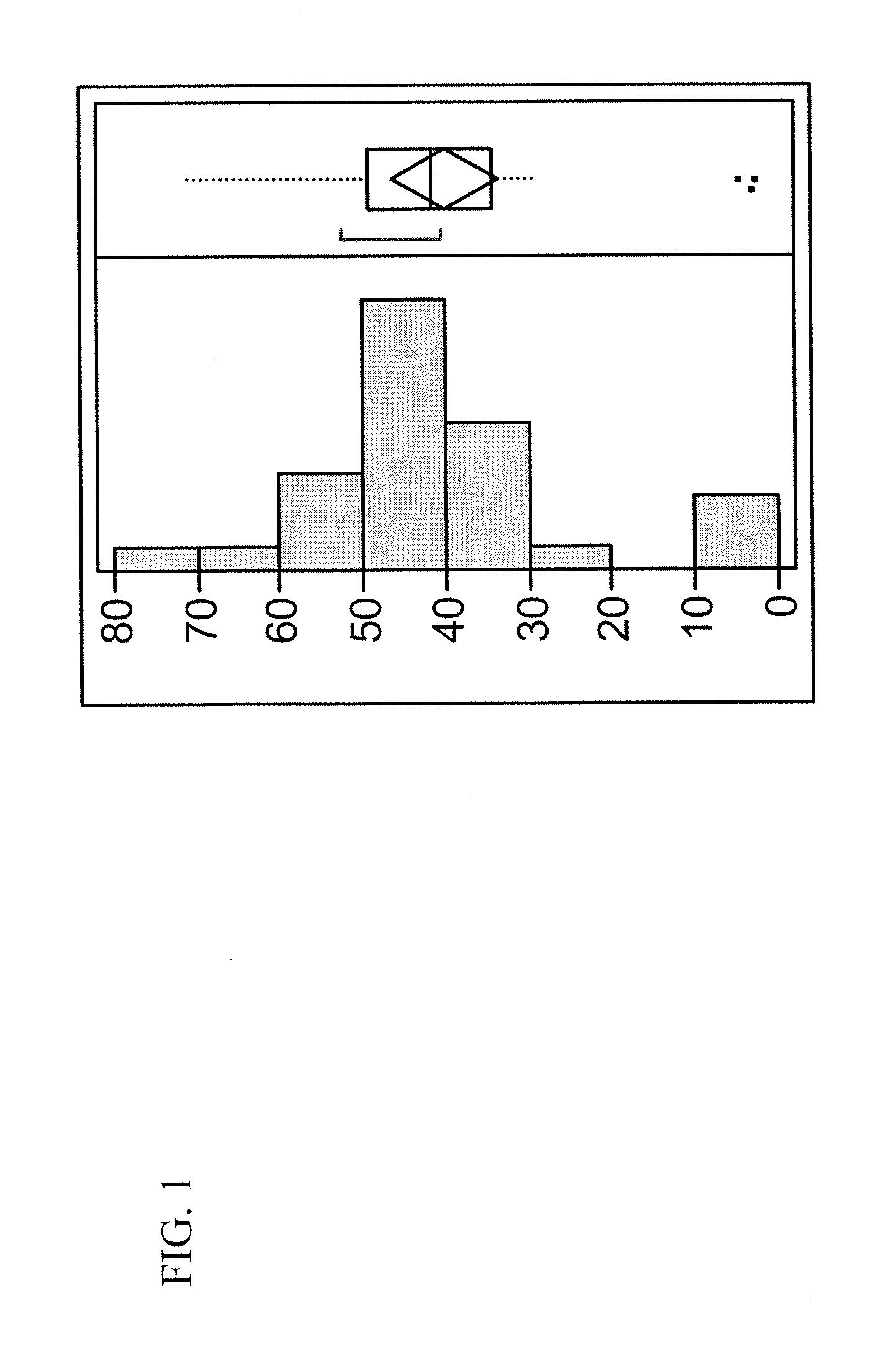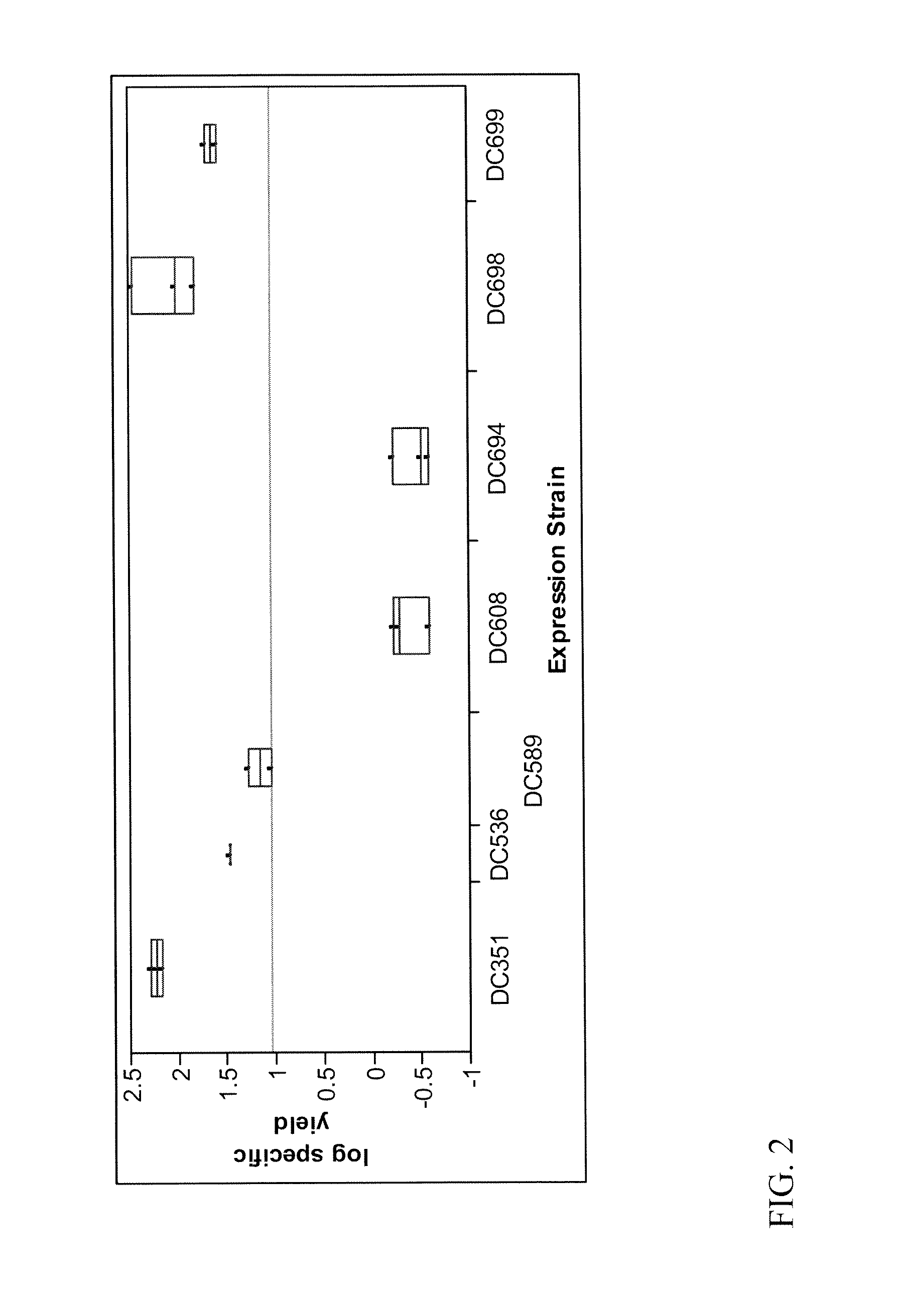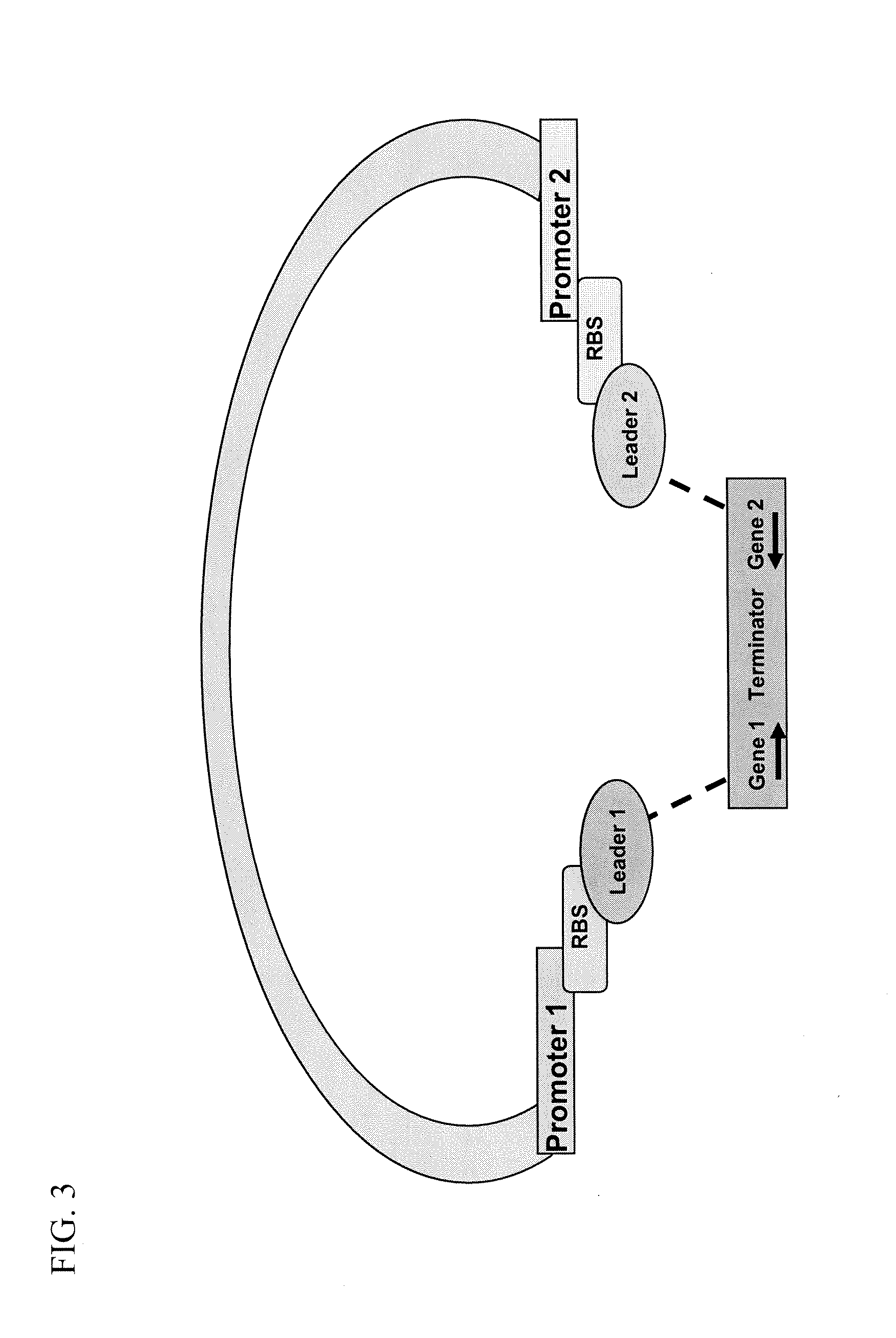High throughput screening method and use thereof to identify a production platform for a multifunctional binding protein
a multifunctional binding protein and screening method technology, applied in the field of identifying and expressing antibody variants, can solve the problems of significant bottleneck in the delivery of pharmacologically active molecules, difficult to identify the best method to express antibodies once the binding region has been identified via phage display or other methods, etc., to achieve high throughput, reduce immunogenicity, and high throughput
- Summary
- Abstract
- Description
- Claims
- Application Information
AI Technical Summary
Benefits of technology
Problems solved by technology
Method used
Image
Examples
example 1
Expression Strains and Plasmids
[0065]Strains used for anti-β-galactosidase derivative expression are shown in Table 1. For each antibody fragment expressed, the VH and VL regions of the Gal2 and Gal13 scFvs identified by Martineau et al. (2, 3) were fused to the appropriate constant regions of human IgG1 (portions of CH1CH2CH3 and Cκ respectively) to generate FAb or mAb molecules. For the Gal13 diabody, the linker between the VH and VL domains was reduced from three to one Gly4Ser clusters.
[0066]Genes encoding the heavy and light chains of anti-fluorescein antibody separated by a bi-directional terminator and cloned into and expressed from a library of 74 expression vectors. The vectors contain various combinations of the Ptac and Pmtl promoters, 3 ribosome binding sites of varying strengths (high, medium and low) and three P. fluorescens secretion leaders (pbp, azurin and iron binding protein).
TABLE 1Strains used in the anti-β-galactosidase expression studyStrainFragmentBinding Reg...
example 2
Growth and Expression in 96-Well Plates
[0067]Seed cultures were grown in 96-well deep well plate with salts 1% glucose media and incubated at 30° C., shaking for 48 hours. Ten microliters of seed culture were transferred into triplicate 96-well deep well plates, each well containing 500 μl of HTP medium, and incubated, as before, for 24 hours. Isopropyl-β-D-1-thiogalactopyranoside (IPTG) was added to each well for a final concentration of 0.3 mM, as well as 1% mannitol in some cases, to induce the expression of the heavy and light chain proteins and temperature was reduced to 25° C. After 24 hours of protein induction, cells were normalized to OD600=20 in a volume of 200 μl, in duplicate, using the Biomek (Becton Coulter) in cluster tube racks.
example 3
[0068]Samples were prepared for analysis by sonicating strain array cultures (cells normalized to OD600=20 in a volume of 200 μl) for 10 minutes using a non-contact cup horn sonicator (Branson Ultrasonics). The sonicates were centrifuged in a swinging bucket centrifuge (model CR422, Jouan, Inc., Winchester, Va.) at 2000×g for 35 minutes at 4° C. and the supernatants removed (soluble fraction) and stored at −20C until further analysis.
PUM
| Property | Measurement | Unit |
|---|---|---|
| Solubility (mass) | aaaaa | aaaaa |
| Immunogenicity | aaaaa | aaaaa |
| Stability | aaaaa | aaaaa |
Abstract
Description
Claims
Application Information
 Login to View More
Login to View More - R&D
- Intellectual Property
- Life Sciences
- Materials
- Tech Scout
- Unparalleled Data Quality
- Higher Quality Content
- 60% Fewer Hallucinations
Browse by: Latest US Patents, China's latest patents, Technical Efficacy Thesaurus, Application Domain, Technology Topic, Popular Technical Reports.
© 2025 PatSnap. All rights reserved.Legal|Privacy policy|Modern Slavery Act Transparency Statement|Sitemap|About US| Contact US: help@patsnap.com



